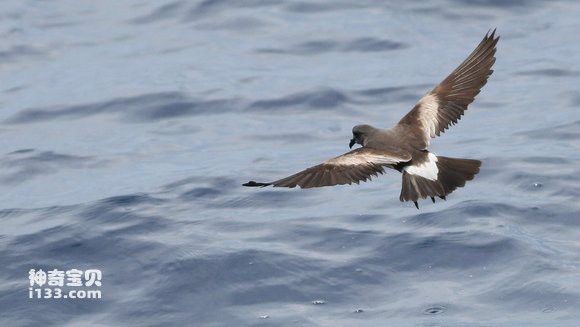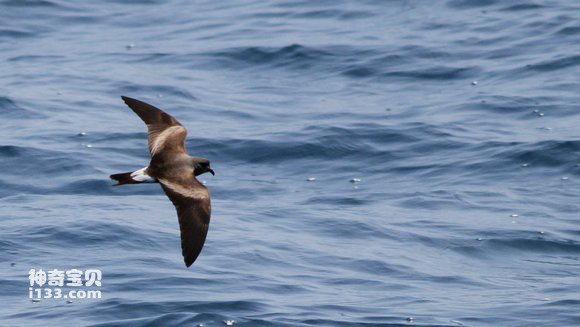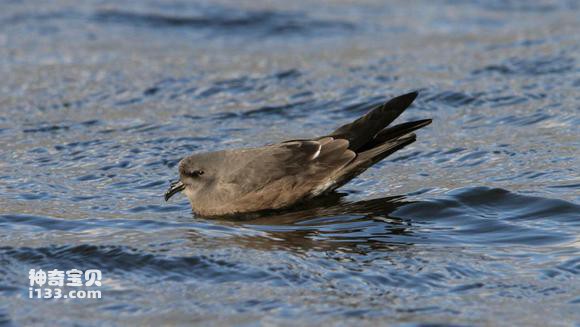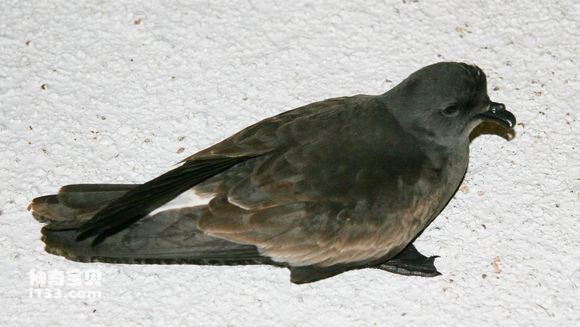Oceanodroma leucorhoa
IUCN
LCBasic Information
Scientific classification
- name:Oceanodroma leucorhoa
- Scientific Name:Oceanodroma leucorhoa,Leach's Storm Petrel
- Outline:Waterfowl
- Family:
Vital signs
- length:19-25CM
- Weight:About 41g
- lifetime:No textual research information is available
Feature
The waist is white, in a "V" shape, divided into two parts by a thin black center line at the bottom
Distribution and Habitat
It is found in the North Pacific and the Atlantic Oceans, the latter extending from north to south to Brazil and the southern tip of Africa.
It inhabits the open ocean and rarely flies to land. During breeding, it inhabits the coastal coast and the nearby sea surface, and the rocks or grass roots in the highlands of the island. It is a typical pelagic seabird, living at sea except the breeding period. It is active in the cold ocean in summer and in the subtropical ocean in winter.
Appearance
The white-waisted fork-tailed petrel is a small seabird. The wings are long and pointed. One primary fly feather, the second longest, and 12 secondary fly feathers. Forked tail, 12 tail feathers. The feet are weaker, the tarsus is more round, the toes are longer, the hind toes exist, but they are smaller, and the position is higher, and the other toes are not in the same plane. The mouth is slender and slightly longer, the base is rounded, the tip is flat, and the upper and lower mouth tips are curved downward into a hook shape.
The feathers are thick and soft. The upper body is dark brown, slightly tinged with gray. Underbody light dark brown. The forehead, cheeks and throat are light, with a slight gray tinge. The inner secondary feathers have white feathers, the primary feathers are dark brown, and the inner feathers are light gray. The large and middle coverts are brown, while the small coverts are dark brown, thus forming a distinct pale wing band on the wings. Tail feathers bl
Details
Leach' Oceanodroma leucorhoa; s Storm Petrel, with 5 subspecies, is a small seabird.

White-rumped furrowed petrels usually arrive at their breeding grounds in early to mid to late May, and begin migrating from their northern breeding grounds to the southern sea in late September and early October. Like groups, good at flying, most of the time are flying in groups over the sea and in the air activities, only rest, sleep and forage in the sea. The breeding season is only active at night, and the chicks are active during the day and night after hatching and other times. Walking on land is fast, taking off is easy, even on flat ground and sea, taking off is without difficulty. Often flying low on the coastal surface, the wings are fast and powerful, the flight is often constantly changing the direction, and from time to time, the foot is stretched out to pat the water, and it can suddenly drop from the air to the water surface to grab food.
Their diet consists mainly of small fish, squid, planktic crustaceans and offal, and sometimes follows Marine mammals to feed on scraps or feces. Mainly shrimp, other small crustaceans, mollusks and zooplankton living in the surface of the water, but also eat fish discarded from the ship, fish offal and other waste items. The main way of foraging is to glide low on the surface of the water, while looking down at the water, when you find that there is available food, you suddenly drop to the surface of the water to grab, you can tilt your head into the water to peck, you can also grab with your feet, especially when you find a lot of food, you can also swim while foraging.

The white-waisted forked petrel breeds on the coasts and islands of the cold ocean, breeding period from May to August, one male and one female. They often nest in groups, often one nest next to another in large groups and in good nesting locations. They nest on rocky coasts and islands on flat, soft ground, as well as on small forested islands. The nest is usually placed in a hole dug by the parent bird in the ground, with a semicircular opening, usually hidden under a tree root, shrub, or grass. The nest is placed in a small chamber with a diameter of 12-13 cm and a height of 7.5 cm after it is dug into the ground at a depth of 5-12 cm diagonally from the opening of the cave. The nest is simple, usually containing only a few dead grass and leaves, but occasionally laying eggs directly on the bare ground.
The eggs are oval, white or dirty white, with small red or violet spots, the size of the eggs is 30.5-35 mm ×22-26 mm, with an average of 32.5 mm ×24 mm. The spawning period lasts from late May to early July and varies by region. Male and female birds incubate their eggs in turns, mostly at night, and hatch for 42-50 or 35 days. After hatching, the chicks are covered with feathers, but the parents still take turns to warm the chicks in the nest for the first few days, and then the chicks are left alone in the nest, and the parents return to the nest every night to feed the chicks. Feeding the chicks is an oily liquid that the parent birds pour out of their stomachs. After about 70 days of feeding by the parent birds, the chicks have completely changed their downy feathers, grown full feathers, and have the ability to fly before they emerge from the nest hole and leave the nest in September and October.

White-rumped split-tailed petrels face a considerable risk of predation on the islands where they breed, which is also a determinant of breeding success and failure, which is closely related to the cats that live on the islands. Savana cats appeared in large numbers before the fledgers of white-rumped fork-tailed petrel chicks were fully fledged, and these cats were also associated with the extinction of white-rumped fork-tailed petrel from some former habitats. The introduction of foxes into areas previously inhabited only by seabirds caused the extinction of white-waisted, splintertailed petrels on many Alaskan islands. House mice are also suspected of affecting the population by entering petrel nests and feeding on bird eggs, but the extent of the impact is unclear.
The white-rumped, split-tailed petrel has experienced intense predation by native predators. In 1997, during the breeding season in Newfoundland, the herring gulls killed nearly 49,000 adult petrel, when its breeding population was about 270,000 pairs (2000). Scientific research has proved that if predation interferes with the breeding grounds of white-waisted splint-tailed petrel, it will cause considerable population decline, which is the main reason for the decrease of breeding success rate. In a 2004 study, it was found that weekly interference halved nest hatching rates, and daily interference resulted in a 56% reduction. Egg abandonment accounted for 91 percent of all causes of declining reproductive rates and occurred only in pairs in disturbed populations.

The feeding range of the breeding season for five of the seven western Atlantic breeding grounds overlaps with offshore oil and gas operations, and three of these breeding grounds have shown a marked downward trend in recent decades (Hedd et al., 2018). Attracting disturbances to lights and torches and subsequent collisions with oil RIGS pose a risk of population decline (Hedd et al., 2018). Pollution from large oil spills can pose very serious threats, although these risks may only affect a small regional population due to the wide range of the species. Small spills of hydrocarbons and synthetic drilling fluids are relatively common (2003) and contribute to chronic oil pollution in the ocean (National Research Council 1985).
It is listed as one of nine Marine important bird areas in Europe, including Iceland, Ireland and the United Kingdom. In the European Union, it is included in 25 special protected areas in France, Ireland, Spain and the United Kingdom. Various countries, including the UK, have introduced artificial nest boxes in breeding colonies to reduce predation risk and facilitate monitoring of breeding success (2008).
It was included in the List of Beneficial Terrestrial Wildlife under State Protection or of Important economic and scientific research Value issued by the State Forestry Administration of China on August 1, 2000.
Listed in Appendix II to the Berne Convention.
Listed in Appendix I of the EU Wild Bird Protection Directive.
Listed on the IUCN Red List of Threatened Species (IUCN) 2018 ver 3.1 - Vulnerable (VU).
Protect wild animals and eliminate wild meat.
Maintaining ecological balance is everyone's responsibility!








